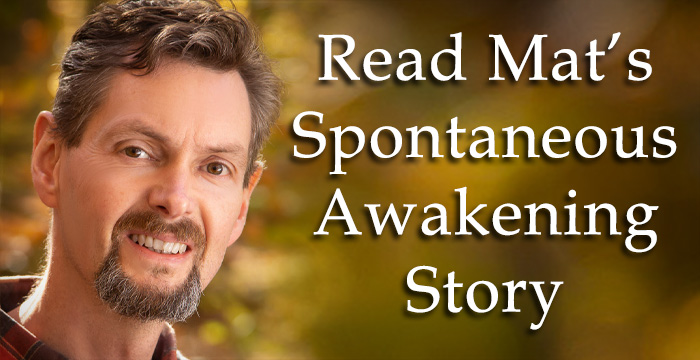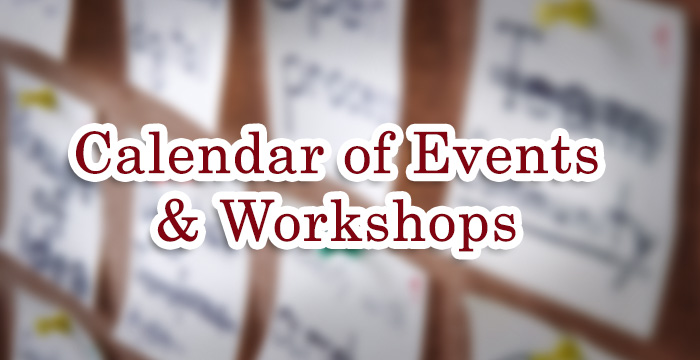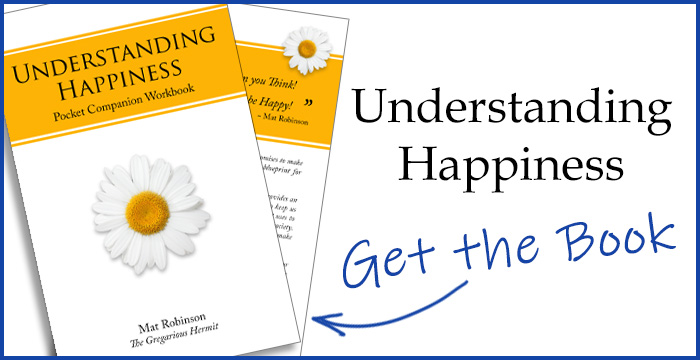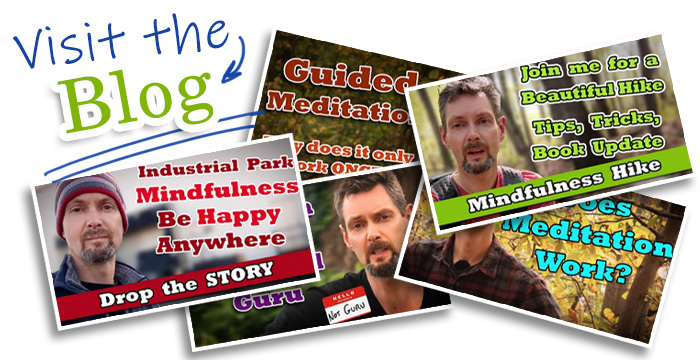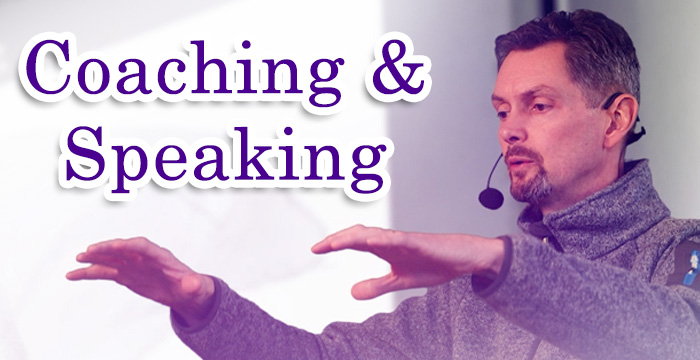Mantra meditation techniques use the simple act of repeating a sound or phrase over and over to focus the mind and induce a trance. Some people use a short sentence to act as a powerful affirmation. But the mantra itself, is simply the word or phrase we choose. There is no set mantra.
As with all forms of meditation, we actively use the mind rather than letting it run unchecked. Each time the mind wanders from the task we gave it, we gently bring it right back to what we want it to be doing.
In this case, repeating the mantra.
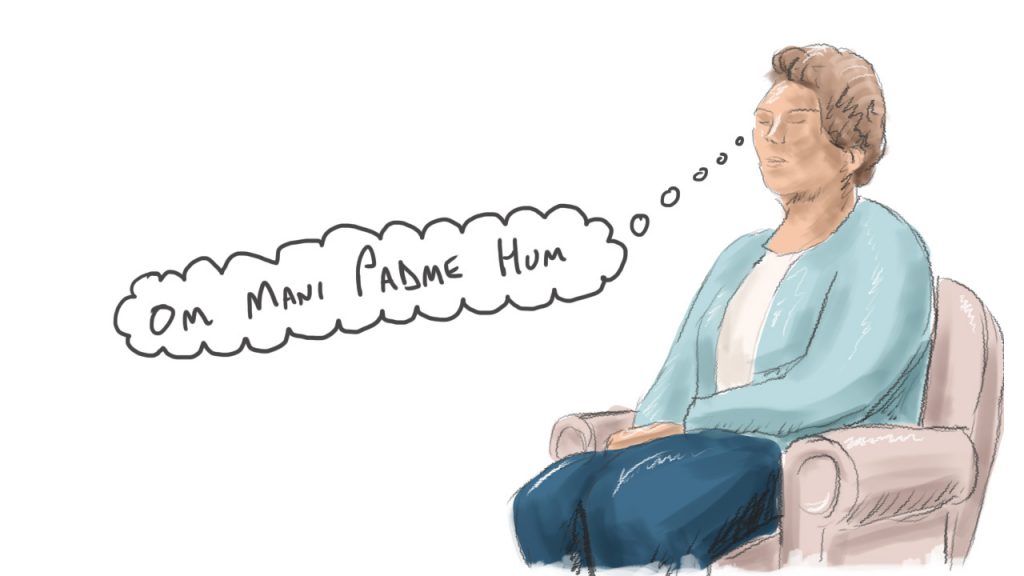
You can say your mantra out loud, or silently in your head. Either seems to work just fine, but saying it out loud reinforces your mantra because now you are hearing it audibly which creates slightly stronger feedback.
The feedback is created because we have to process the mantra into spoken words. We use muscles to speak it out loud. We hear it externally and process it again as sound.
Compared to saying the mantra in your head where you don’t have to process the mantra into spoken words, you simply imagine the phrase in your mind. There is no auditory feedback to focus on either.
You can try both. If you’re self conscious, saying your mantra internally will keep any nerves about somebody overhearing you at bay. But if you’re in a safe space, try saying it out loud and you’ll see that it can be a little easier to remain focused on the mantra.

Why is mantra meditation so effective?
Mantra meditation is a powerful way to gain control over your mind. Our egos “talk” to us using words. They sound like us and imitate our voice. So naturally we are fooled into thinking we are our mind and that we are the voice in our head.
So if language is how our mind grabs our attention, we can take control of that process by telling our mind what to say.
Give it a simple phrase to repeat over and over again.
That way, we stand a much better chance of noticing when the dialogue changes and when the mind is trying to take control again.
And as soon as you notice your mantra has stopped, you can simply go right back to saying it again.

What are some of the pitfalls of mantra meditation?
As with all formal meditations, you need to remain keenly focused on the task. Using mindfulness to observe the texture and sound of the mantra as you say it.
You should focus so strongly on the sounds that nothing else has chance to penetrate your thoughts.
Pay close attention to the silences that occur at the end of the mantra before you start the next iteration. That’s when your mind has a chance to jump in and change the dialogue.
Sometimes you may find you experience two voices in your head. You’re diligently repeating your mantra but there’s also another voice layered on top. It may whisper or it may have a different accent so it doesn’t sound like you.
Don’t worry, you don’t have Morgan Freeman in your head. It’s just your mind trying whatever it can do to get back in control.
Remember. Your mind will often get scared when you start meditating because it realizes that if you continue, eventually it will die. Your ego will cease to exist.
When this happens, your mind will try to fight back and may become noisier than before.
And when it does this, you may become keenly aware of just how little control you have over your mind. This can be frightening. It may feel like you opened a Pandora’s box. Don’t get scared. Just keep going.
As you get deeper into your mantra meditation, you may start to experience unusual physical sensations or visions. This is just your body relaxing and you’re noticing energy moving in your body.
When you notice things like that, just gently come back to focusing on your mantra.
That’s all you have to do.
Repeat, repeat, repeat. When you get distracted, just come right back. Repeat, repeat, repeat.

OM or AUM
Using a mantra to meditate is one of the oldest methods for achieving stillness and a trance like state.
And of course, the one we all know and love is “OM” or “AUM”.
This is the mantra people like to use when they are imitating somebody meditating 🙂
Om has many different interpretations, but is often referred to as the “sound of the universe“. It has a special ability to resonate in different parts of your body. The “aaaaaaaa” (like car) sound resonates the lower abdomen. The “uuuuuuuu” (like spoon) resonates in the chest. And the “mmmmmm” sound resonates the head.
This has the effect of causing energy to flow from the base of the spine to the top of the head. Sounds like awakening those Chakra’s to me 🙂
You can read more about using OM or AUM in this detailed meditation blog post.

Choosing a Mantra
My advice is to choose a mantra that resonates with you (no pun intended).
There are some fabulous, traditional mantras that have been used throughout the ages. There’s a reason these mantras exist and are still popular today.
They are often written in Sanskrit or Hindi and are said to have spiritual powers that go beyond the simple verbiage. With the potent, energy moving resonance of AUM, I don’t doubt that.
Here are just a few examples for you to try.
- Om Mani Padme Hum – “Praise to the Jewel in the Lotus”.
- Om Shanti Shanti Shanti – “Om Peace Peace Peace”.
- Ham Sah – “I am that”.
- Aham Prema – “I am Divine Love”.
- Om Namah Shivaya – “Bow to Lord Shiva”
So, as I mentioned in one of my previous posts, I do not consider myself to be a spiritual guru because I have not devoted my life to the study of spiritual texts or the pursuit of things of a spiritual nature. My life situation made me lucky enough to experience a transformative spiritual awakening, but I was just in the right place at the right time when I got hit by the spiritual juggernaut.
So I cannot tell you if those mantras above hold any special meaning or power beyond the simple English translations, but I can tell you that repeating each of those phrases over and over again is likely to lead to a trance like state.
The huge benefit of using one of the mantras above is that for most of us Westerners, Sanskrit and Hindi are not our spoken language, so the mantras are simply just melodic sounds.
Why is this such a huge advantage? Because sounds don’t need interpreting.
If I say, “Om Mani Padme Hum”, it has a gentle rhythm and cadence to it. It is not jarring or grating. It is more like a gentle hum. Like honey in the mouth and honeysuckle to the nose.
If instead I used the English interpretation, “Praise to the Jewel in the Lotus”. Whilst also sounding pleasant, it doesn’t roll as smoothly as the Sanskrit original. It doesn’t smell so fragrant.
Each time I say the word “jewel”, my mind is likely to picture an expensive diamond or ruby. Whenever I say the word, “lotus”, I am likely to picture a lotus flower. Or alternatively, my mind might also picture a Lotus sports car.
Words have power and meaning. Our minds interpret dialog and put meaning to it. If I said, “elephant” to you, you’d find it hard not to picture a giant grey elephant.
So Sanskrit or Hindi mantras are actually more beneficial than just being a”vogue” thing to do in a yoga class.
My personal favorite is, “Om Mani Padme Hum”. Love it. It’s so joyful.

Modern Western Mantras
So having just said how beneficial mantras are that just use sound, and don’t allow your mind the opportunity to interpret and place meaning on the words, it would be remiss of me to mention some popular Western Mantras.
- I am love, I am light
- Each day is a blessing
- Every cell in my body is alive and beautiful
- I welcome health and peace
- Today I will not judge
So, without sounding too negative. These are all really great, well meaning, motivational sayings and wonderful affirmations. But they very, very, very much miss the point of a mantra.
What they in fact do, is reinforce the ego. They may help to change someone’s nature towards a more positive orientation. They might help break bad habits, but they’re just building new layers on top of our ego identity.
A mantra is meant to remove you from your mind. Using the mantra to slowly put the mind to sleep. Your steadfastness and focus keep your mind on task, not allowing it to deviate and start chattering.
A mantra uses repetition, cadence and rhythm to maintain focus. And the more intently you remain focused, the mind slowly loses its power over you until a trance is achieved. At that point you will start to have spiritual experiences.

Traditional vs Making One Up
So if you don’t like the thought of using a traditional Sanskrit or Hindu mantra, then, you can actually make one up for yourself.
You can combine several simple and distinct syllables to create your mantra. Usually one consonant and a vowel for each sound.
Long vowels are great because they create a more “sing songy” effect with a slow roll off of the sound.
For example. We’ll use “S” as our consonant and “Aaaaaaaa” for our long vowel, to create the sound, “Sssaaaaaaaaa”.
That’s our first syllable. Now lets come up with a couple more.
“N” and “Eeeeeee” to make “Neeeeee”.
Now we’ll add a syllable that ends with a consonant. “Bim”.
Finally, “T”, “Aaaaaaaa” for “Taaaaa”.
So putting it together, we get, “Saaaaa Neeee Bim Taaaaaaaaaa”.
OK, sounds kinda silly but it’s not a bad start. If you say it over and over , “Saaaa Neeee” sounds like British slang for “Sandwich” as well as “Knee”, so let’s change it to “Saaaa Deeee Bim Taaaaaa”.
As you roll it around in your head, you may find that it actually starts to modify itself. That, in itself is a wonderful experience because it’s not you actually doing it.
My personal mantra that I made up, evolved into “Sham Baaaaaa Laaaaa”.
Which, ironically, I just Googled it before writing this article to make sure I wasn’t going to offend anyone with my made up word.
“Shambala” is a mythical kingdom in Tibetan Buddhism. Well go figure.
When you come up with your own mantra and let it mature for a few meditation sessions, you may also find something similar happens to your mantra too. It’s like the universe reaching out to you to let you know you’re on the right path.
But definitely make sure that your mantra doesn’t sound like a word you recognize. It will certainly keep you stuck as your mind subconsciously latches on to the meaning.

Transcendental Meditation (TM)
And of course, it wouldn’t be right for me to omit Transcendental Meditation in a discussion about mantra meditations. TM is a trademarked term by the “Maharishi Foundation USA”. You can check out their website at tm.org if you want more information.
Wikipedia quotes – “Transcendental Meditation (TM) is a form of silent, mantra meditation advocated by the Transcendental Meditation movement. Maharishi Mahesh Yogi created the technique in India in the mid-1950s. Advocates of TM claim that the technique promotes a state of relaxed awareness, stress relief, and access to higher states of consciousness, as well as physiological benefits such as reducing the risk of heart disease and high blood pressure”.
Enough said. I think Wikipedia did a good job summarizing that 🙂
So with such a highly successful movement built around the practice of mantra meditation, there’s definitely a lot of evidence that suggests it works.

How to do a Mantra Meditation Properly
By now you should have a pretty good idea how mantra meditations work. You should also select your mantra before starting.
- Find a quiet location – Set up your environment
- Sit comfortably – Sit in your favorite meditation posture
- Close your eyes
- Relax your body
- Take a few deep breaths in and out to signal to your body that you’re about to start
- Relax into a slow and natural breathing pattern
- When you’re ready. Start repeating your mantra over and over again in your head
- Do this for as long as you like (15-20 minutes recommended)
- When you find your mind has wandered, gently bring it back to focusing on the breath
- When you are finished, slowly open your eyes and become aware of your surroundings
That’s it. It literally doesn’t get any easier than that. You don’t need any special equipment. No special training.
Just rinse and repeat. And repeat. And repeat.

Mantra Meditation Conclusion
Mantra meditation is one of the easiest forms of meditation that has been practiced in various forms for thousands of years.
It’s simple. You don’t have to wear robes. You don’t have to sit in lotus position.
You just sit comfortably. Close your eyes and repeat your chosen mantra over and over and over again. Either out loud or silently within your head.
Each time you notice your mind has wandered, just get back to saying the mantra again.
It’s as simple as that. No fuss. No Drama.
“Om Mani Padme Hum” my friends.
